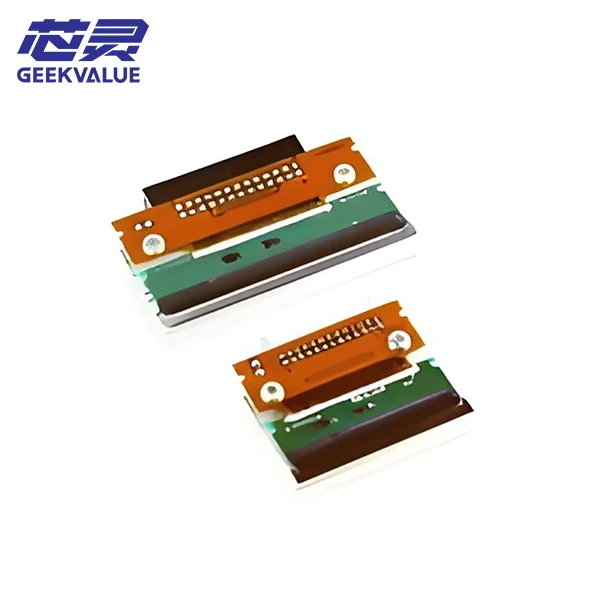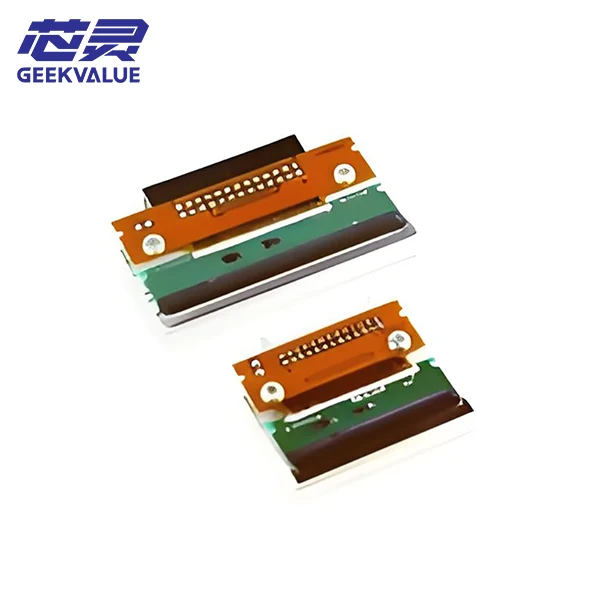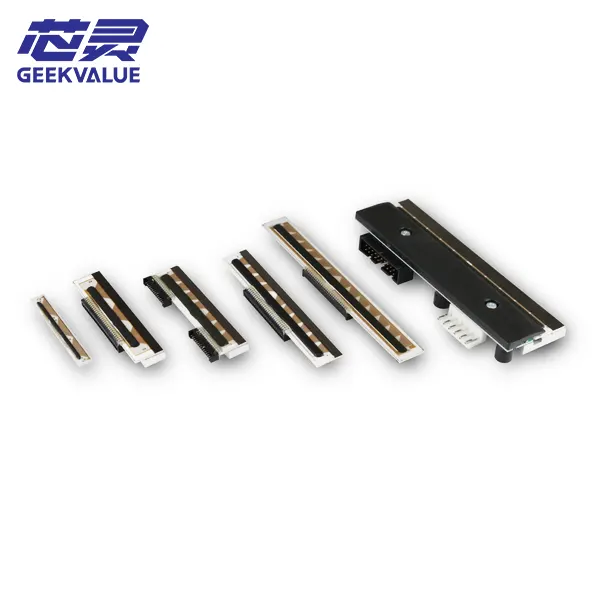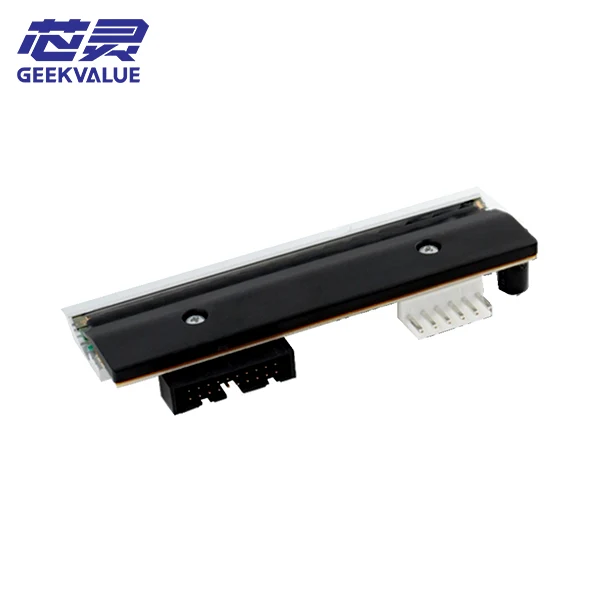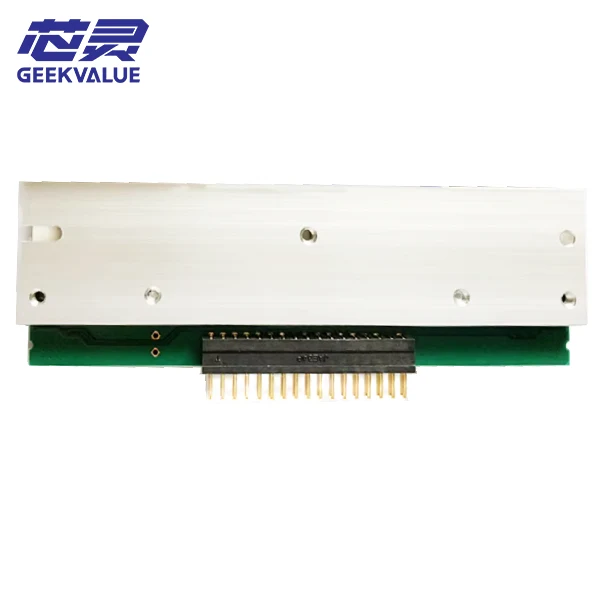ROHM's TTO (Thermal Transfer Overprint) print head is a high-precision thermal transfer printing component dedicated to date coding, batch number printing, and variable data marking. It is widely used in food packaging, pharmaceuticals, electronic labels, chemicals and other industries. Its core principle is to transfer the ink on the ribbon to the surface of various materials through thermal transfer technology to achieve high-definition and durable logo printing.
1. Working principle of ROHM TTO print head
1. Thermal transfer technology (Thermal Transfer Printing)
The TTO print head selectively heats the ribbon (carbon ribbon) through micro-heating elements (heating points) to melt the ink and transfer it to the target material (such as film, label, packaging bag, etc.). Unlike thermal printing, TTO print heads need to be used with carbon ribbons, but they have stronger durability and adaptability and are suitable for a variety of materials.
Workflow:
Data input: The control system sends the print content (such as date, batch number, barcode).
Heating control: The heating points on the print head are heated on demand to partially melt the carbon ribbon ink.
Ink transfer: The melted ink is pressed onto the target material to form a clear mark.
Ribbon feeding: The ribbon advances automatically to ensure that a new ink area is used for each print.
2. Wide range of applicable materials
Flexible packaging (PE/PP/PET film, aluminum foil)
Label paper (synthetic paper, coated paper)
Hard materials (supported by some models)
II. Core functions and advantages of ROHM TTO printhead
1. High-resolution printing (up to 600 dpi)
Supports fine text, barcode, and QR code printing, suitable for high-demand identification scenarios (such as pharmaceutical regulatory codes).
Compared with traditional CIJ (inkjet) or laser coding, TTO printing is clearer, without blur or smudges.
2. High-speed variable data printing
Microsecond heating response, supporting high-speed production lines (such as food packaging lines up to 200m/min).
Printing content (date, batch, serial number) can be changed in real time without stopping for adjustment.
3. Long life and low maintenance
Use wear-resistant ceramic substrate to extend the life of the print head (typical life > 1000 hours).
Intelligent temperature control technology to avoid overheating damage and reduce ribbon waste.
4. Energy saving and environmental protection
Low power design (more power-saving than laser or inkjet).
No solvent volatilization, in line with food and pharmaceutical industry safety standards (such as FDA, EU 10/2011).
5. Compact and modular design
Lightweight structure, suitable for integration into automated production lines or portable coding equipment.
Supports multiple interfaces (RS-232, USB, Ethernet), easy to control by PLC or PC.
3. Typical applications of ROHM TTO print heads
Industry Application scenarios
Food packaging Production date, shelf life, batch number printing (such as beverage bottles, snack bags)
Pharmaceutical industry Drug batch number, expiration date, regulatory code (in compliance with GMP/FDA requirements)
Electronic label Component traceability code, serial number printing (high temperature resistance, chemical corrosion resistance)
Chemical products Hazardous goods label, ingredient description (resistance to ink shedding)
Logistics warehousing Freight label, variable data printing (replacement of traditional preprinted labels)
4. ROHM TTO vs. other coding technology comparison
Technology TTO (thermal transfer) CIJ (inkjet) Laser coding Thermal printing
Print quality High definition (600dpi) General (easy to smudge) Ultra-fine (permanent marking) Medium (thermal paper only)
Speed High speed (200m/min) Medium-high speed Medium speed Medium-low speed
Consumables Carbon ribbon required Ink required No consumables Thermal paper required
Durability High (friction resistance, temperature resistance) Low (easy to erase) Very high (permanent imprint) Low (afraid of heat and light)
Applicable materials Film, label, some hard materials Porous materials (paper, cardboard) Metal, glass, plastic Thermal paper only
Maintenance cost Medium (ribbon replacement) High (nozzle clogging) High (laser maintenance) Low (no ink)
V. Conclusion
ROHM TTO printheads have become the preferred solution in the field of packaging coding and traceability identification due to their high precision, high-speed variable data printing, long life and wide applicability. Compared with traditional inkjet or laser technology, TTO has more advantages in clarity, flexibility and operating costs, and is especially suitable for high-demand identification needs in industries such as food, medicine, and electronics.
For production lines that require high-resolution and durable date/batch number printing, ROHM TTO printheads provide efficient and reliable solutions.
